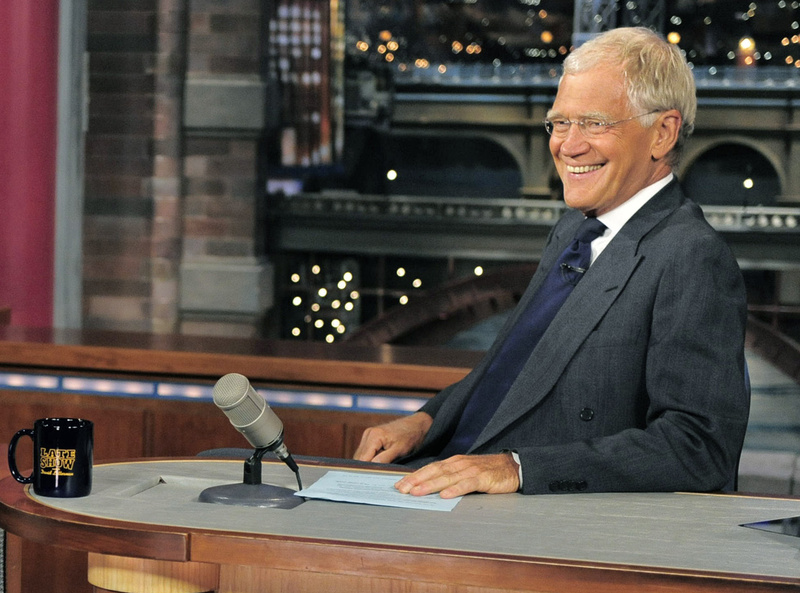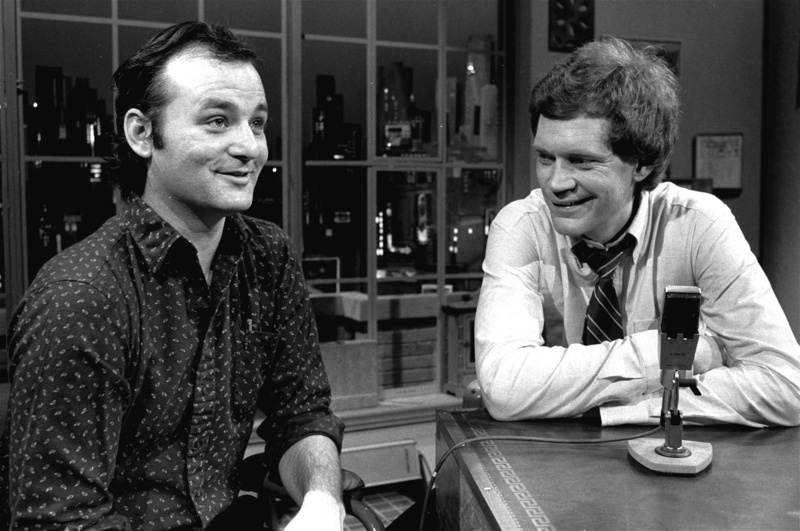Tonight, David Letterman marks 20 years on CBS, a length of time that is nearly one-third the age of the network’s average viewer (cue rimshot). His guest will be fellow sexagenarian Bill Murray, who was also the guest on Letterman’s first show on CBS, in August 1993, and his first late-night show ever, on NBC in 1982. If the pair’s 24 previous interviews on “The Late Show” are any indication, this one will involve a costume, a song, some kind of gag, and the trading of unpleasantries between two men who have settled into a good-natured glumness about their elder statesmanship.
Letterman made his initial mark by subverting the talk-show template, and Murray proved an enduring and capable foil by subverting the role of the talk-show guest. They were troublemakers of television, equals in their rebellion.
“I swear, Letterman, if it’s the last thing I’m gonna do,” said a 31-year-old Murray during the first “Late Night,” on Feb. 1, 1982, “I’m gonna make every second of your life, from this moment on, a living hell.”
Nobody would’ve said that to Johnny Carson, and nobody would say that to Jay Leno. Now Leno is preparing to pass the “Tonight Show” torch – for real this time – when he airs his last show Feb. 6. The baby boomers, represented by Leno, are surrendering to Jimmy Fallon and Generation X, hoping to also lure millennial viewers and whichever tortured demographic watched the entirety of Sunday’s MTV Video Music Awards, at which Fallon, literally genuflecting, introduced Justin Timberlake as if he were Nelson Mandela.
“I am so honored to be standing right here next to you!” Fallon gushed to his fellow 30-something, who was receiving the equivalent of a lifetime achievement award.
Letterman, a Kennedy Center honoree last year, would never have given such an obsequious introduction without laying on sarcasm with a trowel. But Fallon’s hosting shtick is buddy-buddiness, evidenced by his sunny jam sessions with musicians on his late-night show. Letterman has always been a cynic. Fallon will take over his ratings rival as an optimist, an Eddie Haskell without the smarm, a real ESFP (for you HR types). It’ll be grump versus cherub – vs. whatever Jimmy Kimmel is – in the 11:35 p.m. time slot.
Letterman’s contract is up next year, and in an interview with The Washington Post in November, he implied that he can’t see beyond a 25th anniversary with CBS. As for an heir to “The Late Show,” he pulled a familiar name out of the air.
“I would be eager to see what the next thing is,” Letterman said during the interview, which took place in his production offices in New York. “And I don’t wanna keep jumping up and down for Jimmy Fallon, but I think – I can’t tell whether he’s figured something out, or, I dunno. I don’t think he’s radically different enough for the form to say it’s breakthrough, but he’s doing different things that people respond to.”
Fallon, of course, was offered the “Tonight Show” job and took it. Regardless, we are witnessing the final years of David Letterman’s late-night career, which has staked territory for rough-hewn absurdity in an otherwise polished and regimented environment.
For 20 years, “The Late Show” has been Letterman’s attempt to conjure chaos within the strict talk-show format, whether by inviting and then needling unpredictable guests, hurling objects off the top floor of his building at 53rd and Broadway, or rendering zany non-sequiturs into a Top 10 list. As always, Letterman will mark a special milestone in this career with his peer in sarcasm, Bill Murray.
There was Bill, in 1982, performing Olivia Newton-John’s “Physical” after his sit-down interview.
There was Bill, in 1993, promoting “Groundhog Day” on the last “Late Night” and spray-painting “DAVE!” on Letterman’s desk on the first “Late Show.”
There was Bill, in December, turning his entrance into a rendition gag, arriving on the stage of the Ed Sullivan Theater after being hooded and Tasered, because why not?
Murray has shown up in football gear, a smoking jacket and beret, and, most extravagantly, on crutches and wearing an ushanka, with a sequined magenta leotard underneath a winter coat. Paul Shaffer always plays him on with “Physical” or the theme to “Star Wars,” which Murray memorably set to words on “Saturday Night Live” during the Carter administration.
Letterman knows to step out of his way, and Murray knows how to push the host’s buttons.
“Well, I got a message, a phone call, in my dressing room from a hysterical woman,” Murray said in 1994, speaking in a frontiers-y accent and wearing a cowboy getup. “May I borrow your phone for a moment, please?”
“Bill, I’m going to ask you to stop talking like that,” Letterman said. “Or I’ll take your little kerchief there, tighten it up and hook it to a bus on Broadway.”
They laughed, and Letterman gave him the phone, and Murray called Letterman’s mother, and told her that her son hadn’t given up smoking, and then asked about Indiana’s corn crop.
In 2007, to celebrate Letterman’s 25th year on late-night TV, Murray showed up in a top hat and tuxedo, uncorked a bottle of champagne and then asked for the phone to call CBS chief Les Moonves for Super Bowl tickets. In June 2012, Murray, inspired by the Tupac Shakur hologram at Coachella, appeared with his own hologram.
Murray, by virtue of his comic legacy and carefree attitude toward stardom, has stayed relevant with the 18-to-35 demographic, and Letterman has stayed relevant, in part, by booking people like Murray with high frequency.
Charged next year with ferrying “The Tonight Show” into a new era while maintaining the institution’s dedicated older viewership, Jimmy Fallon’s best move might be to snag Murray as his first guest, and then offer him a standing invitation when Letterman retires.
Send questions/comments to the editors.




Success. Please wait for the page to reload. If the page does not reload within 5 seconds, please refresh the page.
Enter your email and password to access comments.
Hi, to comment on stories you must . This profile is in addition to your subscription and website login.
Already have a commenting profile? .
Invalid username/password.
Please check your email to confirm and complete your registration.
Only subscribers are eligible to post comments. Please subscribe or login first for digital access. Here’s why.
Use the form below to reset your password. When you've submitted your account email, we will send an email with a reset code.